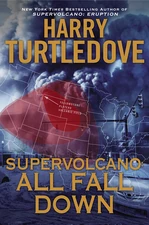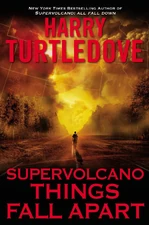In the autumn two years after the Yellowstone Supervolcano erupted, the US Geological Survey organized an expedition to examine the new caldera that had been formed in what had been Yellowstone National Park. The Survey managed to borrow a number of Humvees and crews from the Army and have them organize in Missoula, Montana. USGS geologist Larry Skrtel headed the expedition, with Doctors Kelly Ferguson and Daniel Olson who had worked with him previously, and Professor Geoff Rheinburg along as fellow geologists.[1]
The expedition set out east on I-90 from Missoula in a convoy of Humvees. The first 15-20 miles were normal as the Interstate was still in use for local traffic but as they traveled towards Yellowstone more and more patches of dust and ash that had not been washed away became visible. Bearmouth was still inhabited but just past the town, the Interstate became ash covered. The Humvees managed to continue to travel east, until about 80 miles from the crater, the ground became too tough. At that point, the expedition made camp and the geologists continued east on foot.[2]
It took four days but they finally reach the caldera. Even two years later, the interior of the caldera was as hot as an oven. Ferguson noticed the air shimmering as they approached the edge and the geologists found they could only look into the caldera for a few minutes at a time. Looking in, they could see that the interior continued to fountain gold and red lava against grey hardened rock much like the Big Island of Hawaii. After making observations and collecting samples, the geologists packed up and headed back to the Humvees.[3]
During the trip, both in the Humvees and on foot, the geologists collected both rock and dust samples and those of various plants they and the soldiers found. All samples were stored in the appropriate containers and the coordinates recorded based on the GPS location. They also photographed the surrounding mountains to record the changes caused by the eruption. The eruption had been so powerful that individual mountains were sometimes unrecognizable, both due to the blast and to accumulated ash and lava changing their contours.[4]
References[]
- ↑ All Fall Down, pgs. 171-188, HC.
- ↑ Ibid, pgs. 174-179.
- ↑ Ibid, pgs. 186-188.
- ↑ Ibid, pgs. 177-188.
| |||||||||||||


